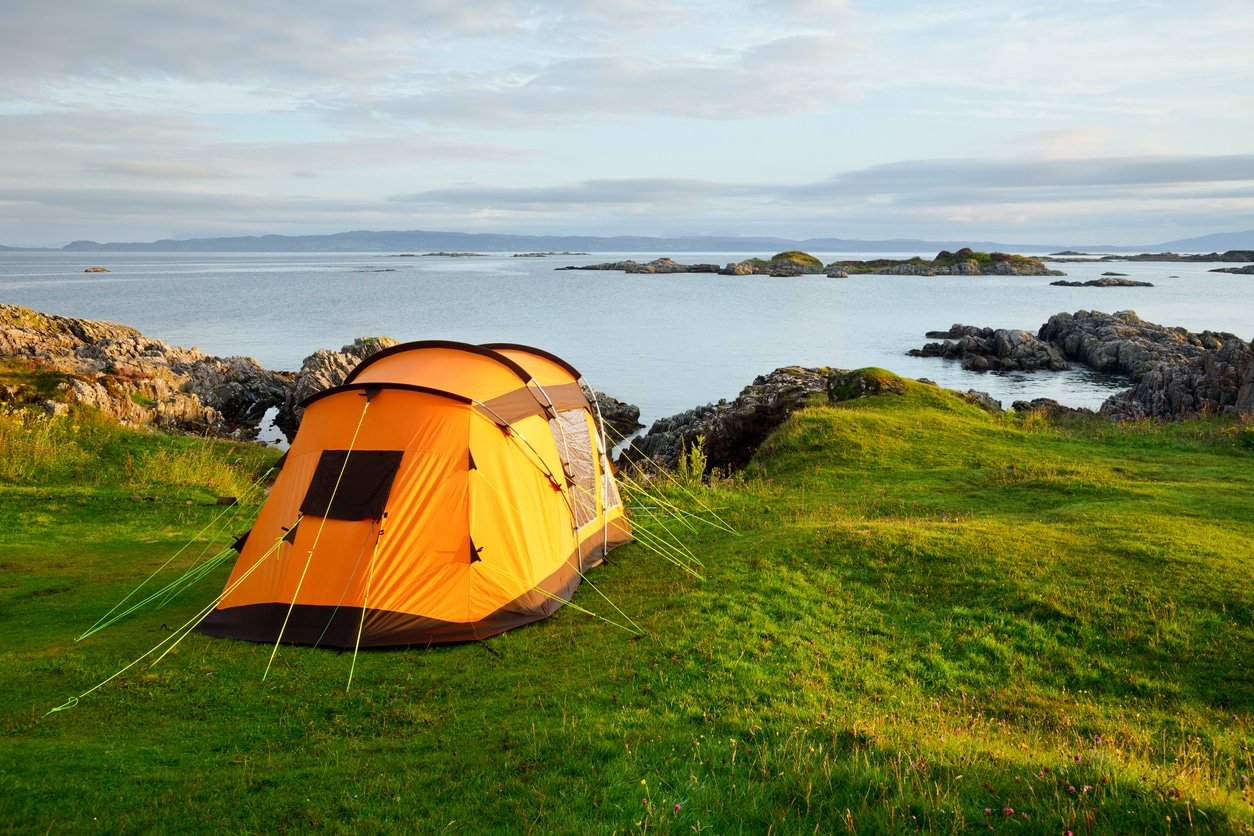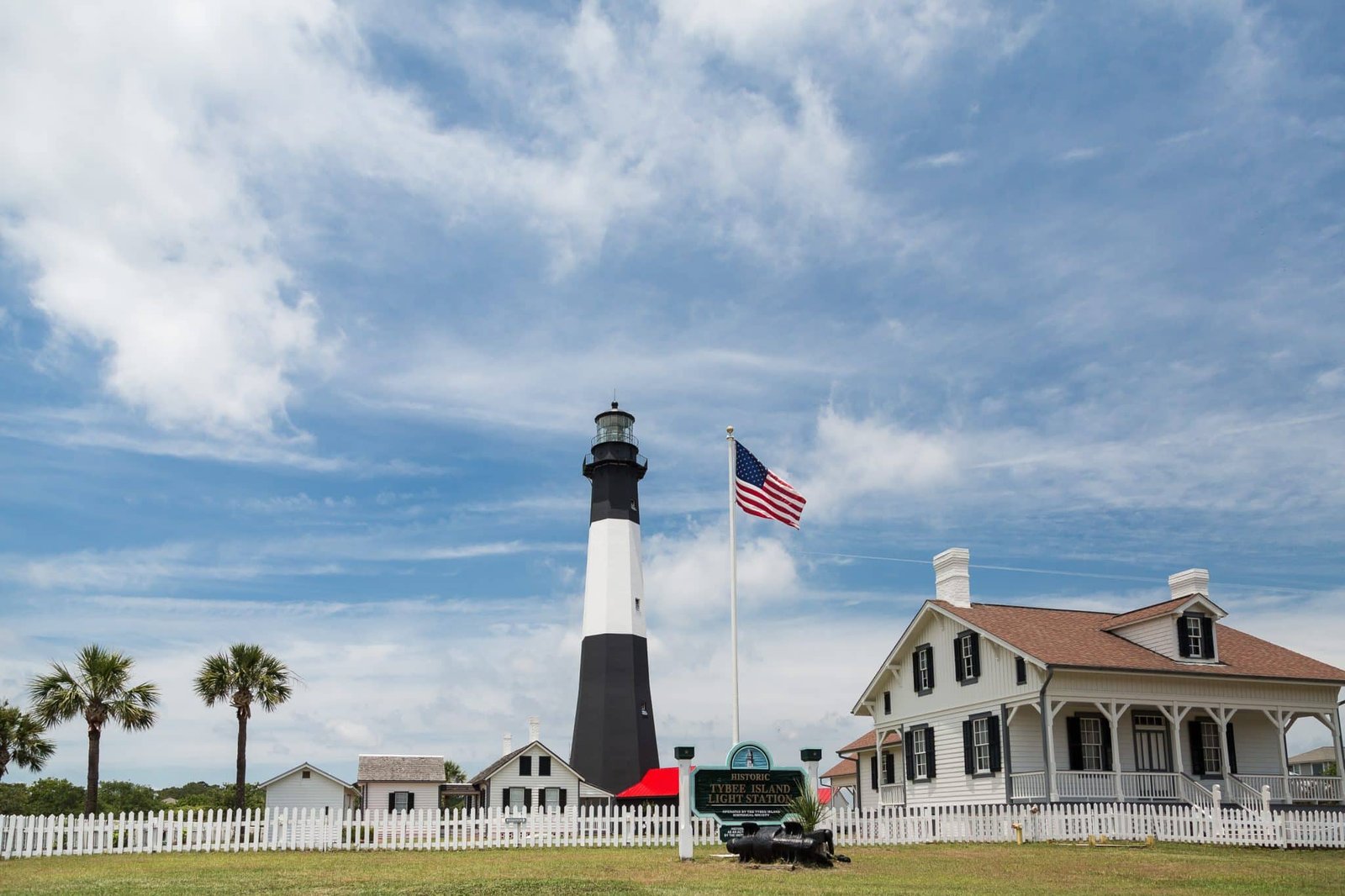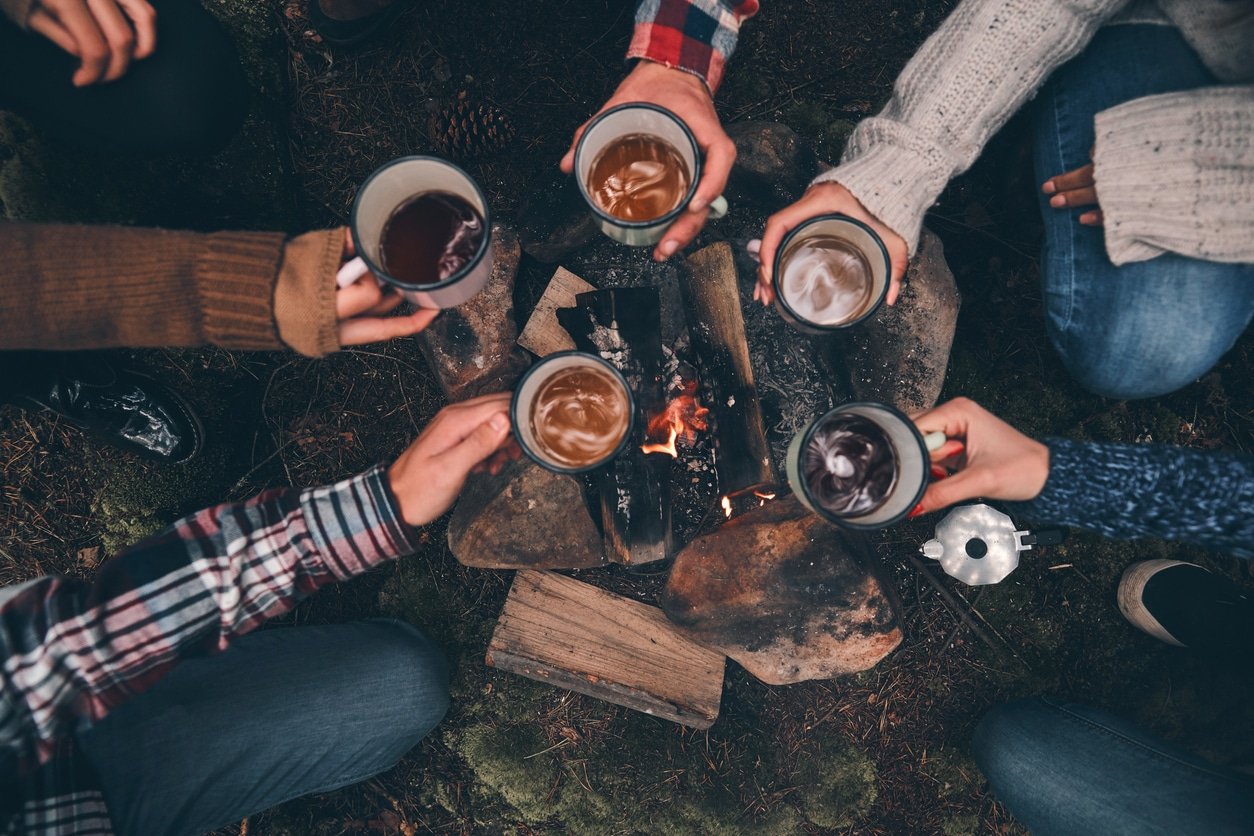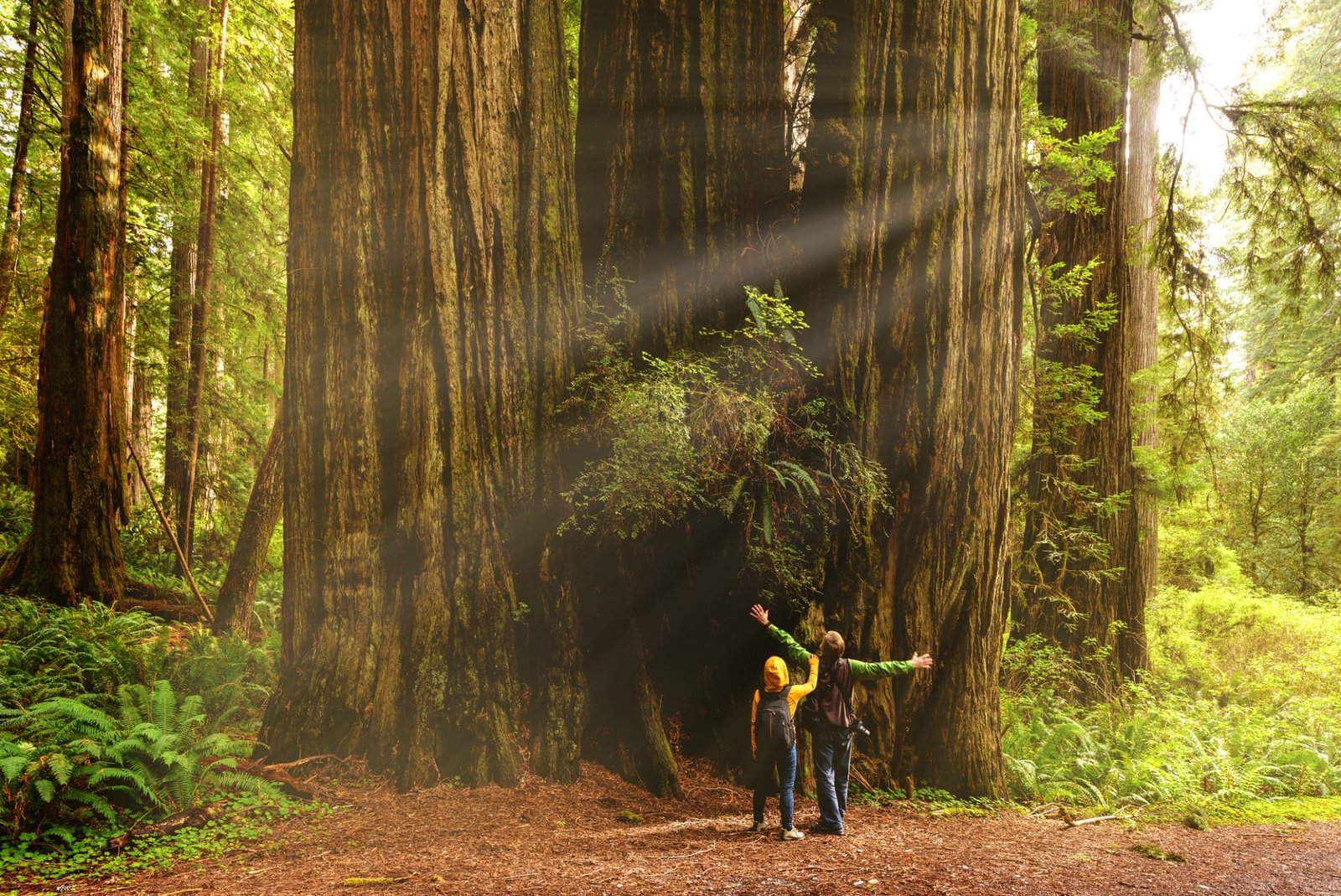A Guide To Angel Island Camping: The Campsites In-Depth, Best Time To Visit & More!
|
Prefer listening over reading? We got you covered!
Getting your Trinity Audio player ready...
|
How about an island as your next camping trip destination? Sitting in the middle of San Francisco Bay is the stunning 740 acres that makes up Angel Island. Known as Ellis Island West since it was used as an entry point by immigrants from East Asia, this lesser-known sister to Alcatraz Island is the second largest in the Bay and comes under the jurisdiction of the Angel Island State Park.
A one-stop shop perfect for a weekend getaway, this island offers everything from historical tours, biking trips, and hiking trails, most of which can be experienced in a day or two. But if you plan to stay the night, there is nothing better than using the few campsites that scattered around the island.
And if you’re planning your own Angel Island camping adventure then you’re in the right place!
That’s because we know this area well. So below we look at each and every camping area on the island, and its campsites, and share everything you need to know about camping there.
So read on to begin your Angel Island camping adventure!
CONTENTS:
- Angel Island Camping: A Quick Overview
- An In-Depth Look at Each Campsite
- Rules to Follow When Camping at Angel Island
- Things To Do When Camping on Angel Island
- Best Time to Visit Angel Island
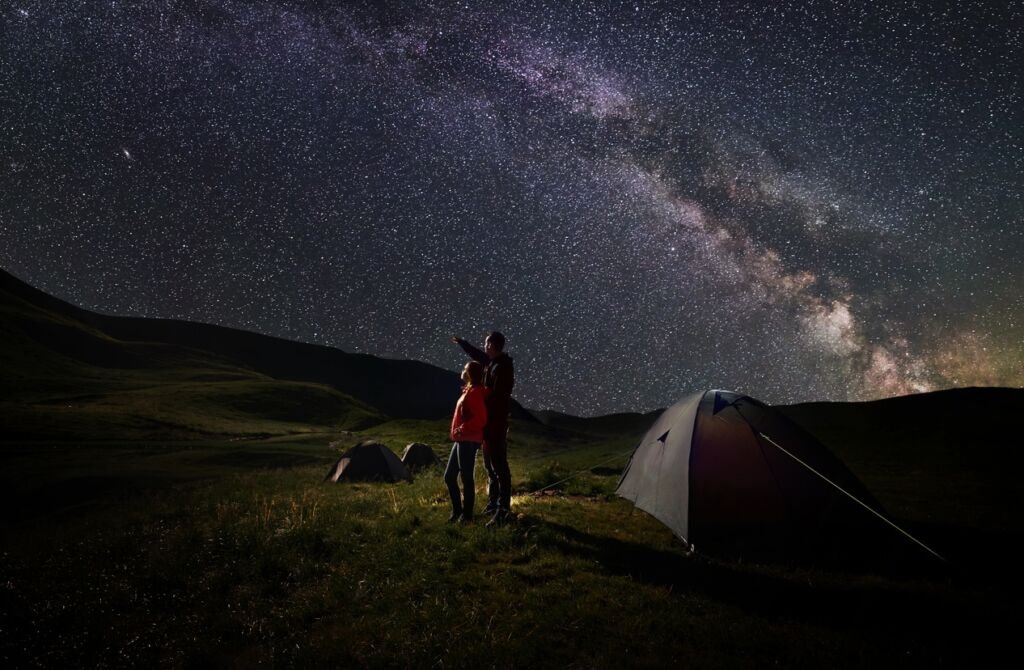
Angel Island Camping: A Quick Overview
The campsites at Angel Island are actually so popular that you will likely need to book your spot at least 6 months before the date you plan to arrive.
Do remember to pack light and make sure your baggage and equipment can be easily carried over long distances since all the sites are at least a mile walk from the ferry landing. Each site is equipped with picnic tables, pit toilets, and running water. A few of the sites even have raccoon boxes to protect your food.
However, wood fires are banned on the island, so you will have to resort to either charcoal or stoves for cooking. The sites are divided into four camping areas – East Bay, Ridge, Sunrise, and Kayak Camp.
Below we look at all four main camping areas, the campsites within them, and give you an idea of what it’s like staying at them.
The rates are typically $40 per night for tent sites and $90 for group camping sites. Reservations can be made here.

Angel Island Camping: An In-Depth Look At The Campsites
East Bay Campsites
The East Bay area houses three environmental campsites, each of them more protected than campsites in other areas. They are located on a ridge on the eastern side of the island and offer spectacular views of the East Bay, the Bay Bridge, and the Oakland and Berkeley skylines.
Campers must be wary of the wind when camping at Angel Island as the intensity can vary from a breeze to 30 mph! However the East Bay sites are comparatively more sheltered from the wind than other Angel Island campsites. That makes for a potentially better camping experience as you won’t constantly have to worry about your tent being swept away by the wind!
But, the one downside is the East Bay sites are notorious for cold mornings, mosquitos, and hungry raccoons that may or may not raid your tents!
Here’s a some information on each campsite:
Site 1
The first campsite is located at the end of the road and has two picnic tables. The site offers enough shelter to ensure a good camping experience hidden from the rays of the sun, all the while giving you a good view of the East Bay Hills.
The best thing, however, is the privacy here as it’s situated so far away from the rest of the campsites.
Site 2
Much like the previous one, the second site is also tucked away under the shelter of trees, but this time on a slight incline with a far-off view of Beverly Hills.
While the site is small, the serene atmosphere and the striking views more than make up for that.
Site 3
This campsite is what pops into your mind when you think about Angel Island camping.
An open space on the hillside with cut tree stumps and scattered logs, this site offers a panoramic view of San Francisco, the Bay Bridge, and the East Bay.
While the picnic table and official tent site are placed at the lower part of the clearing, another tent site at the top has better views.
Unfortunately, the area is not big on shade and the tent sites are situated on slopes with no level ground.

Ridge Campsites
Among all the camping areas on the island, the Ridge campsites offer the most spectacular views with picturesque sights of both the San Francisco skyline and the Golden Gate Bridge.
But prepare for strong winds if you are choosing one of these campsites and make sure your tents are as sturdy as they can be as it can get windy.
These campsites don’t offer much in terms of privacy, but they are far apart from each other to give you some sense of seclusion.
Site 4
With the cypress trees that had once sheltered the area now cut down to stumps, this campsite offers a fully open ground with two picnic tables where you can sit and enjoy a panoramic view of the city and fantastic starry nights.
Unfortunately as the trees are gone this also means there is no shelter from the frigid wind that blows in from the Golden Gate Bridge. However the site has comparatively better privacy than others as it is situated high up on the ridge top.
Site 5
This campsite has two picnic tables and tent sites, the larger one in the shelter of dense tree cover and another under the open sky, which are located at the edge of a bluff.
The only disadvantage to the campsite is that it lies quite close to Site 6, but trees in between each campsite does provide ample privacy. Bring a hammock along, tie it to the trees, and lie back and watch the skyline in proper vacation style.
Site 6
This is the only campsite on Angel Island that does not have a view of the Bay.
Instead it is set beneath cypress trees near Battery Wallace, which is one of the island’s historical sights.

Sunrise Campsites
Sites 7, 8, and 9
What’s great about the campsites in the Sunrise area is that, if booked together, they make for a great group camping spot on a level ground that can host up to 24 people! The flip side of the coin is that there is little to no privacy between these three sites.
Each has a picnic table placed under the open sky and does not have much shade. While sites 7 and 8 are located within five meters of each other, Site 9 is set back from the edge with a lesser view of the city but more privacy.
However, all three of them have outstanding views of San Francisco and the East Bay.

Kayak Camp
This group site can hold up to 20 people and 6 tent camps at once, and is set on a clearing near the beach.
It’s shady thanks to numerous trees across its width, although most of those prevent any view of the city.
But this is an ideal spot if you want to kayak to your campsite – hence the name!

Site 10
Site 10 is an ADA site, reservable only to people with a disability. Located near the perimeter road close to the Kayak Camp, the site is adequately shaded with a minimal view of the Racoon Strait.

Other Camping Areas
Apart from the above Angel Island camping areas, the island has other group campsites that tends to not be as popular.
The West Garrison and North Garrison group camps on the windward side can hold up to 30 people each.
While Service Camp is a warm, well-sheltered site on the leeward side. However, this last site is not visible on maps and you would have to directly contact the Service Camp Coordinator at the Angel Island Conservancy to reserve a spot.
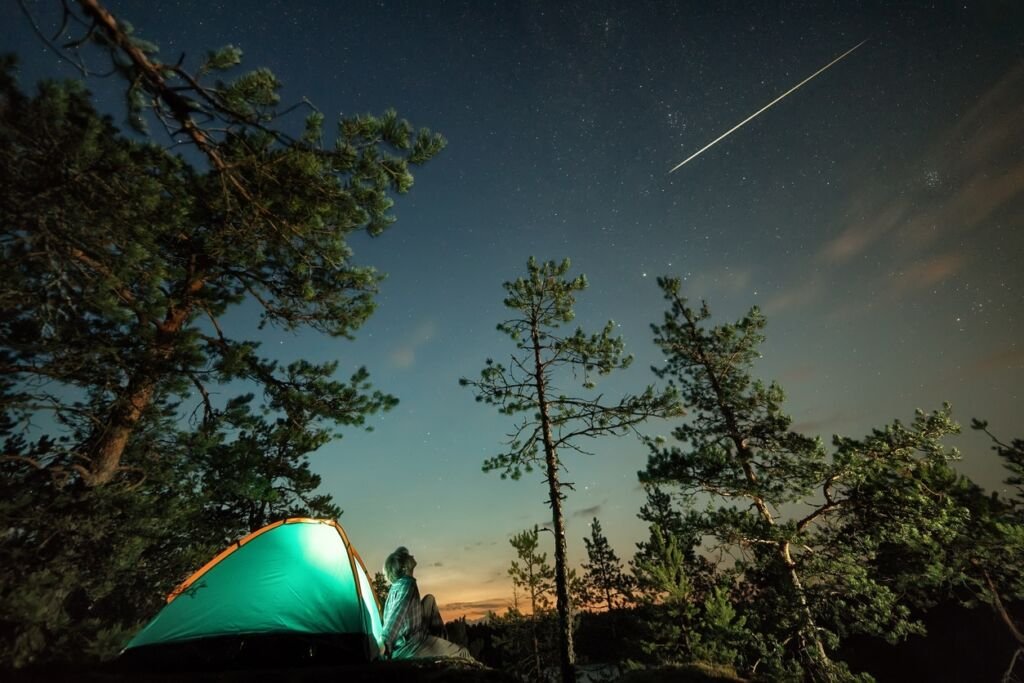
Rules To Follow When Camping At Angel Island
Visitors are only allowed to camp on the island for seven consecutive days, and a maximum of 30 total days in a year. Each campsite can only host up to eight people.
All night travel on the island is strictly prohibited except in certain marked spaces. And if you are traveling to the island on a private boat, it must be moored or anchored offshore by sunset at one of the 24 mooring buoys on Ayala Cove.
Dogs are not allowed on the island, except for service animals, which doesn’t include emotional support animals that are not covered by the ADA.
Campers must also check out before noon on the last day of their reservation. Whilst kayak campers must remove their kayaks from the beach between sunset and 8 in the morning.
Campfires and fire building are not allowed on the campsites. Only charcoal fires and camp stoves are permitted. Swimming is prohibited on the island too.
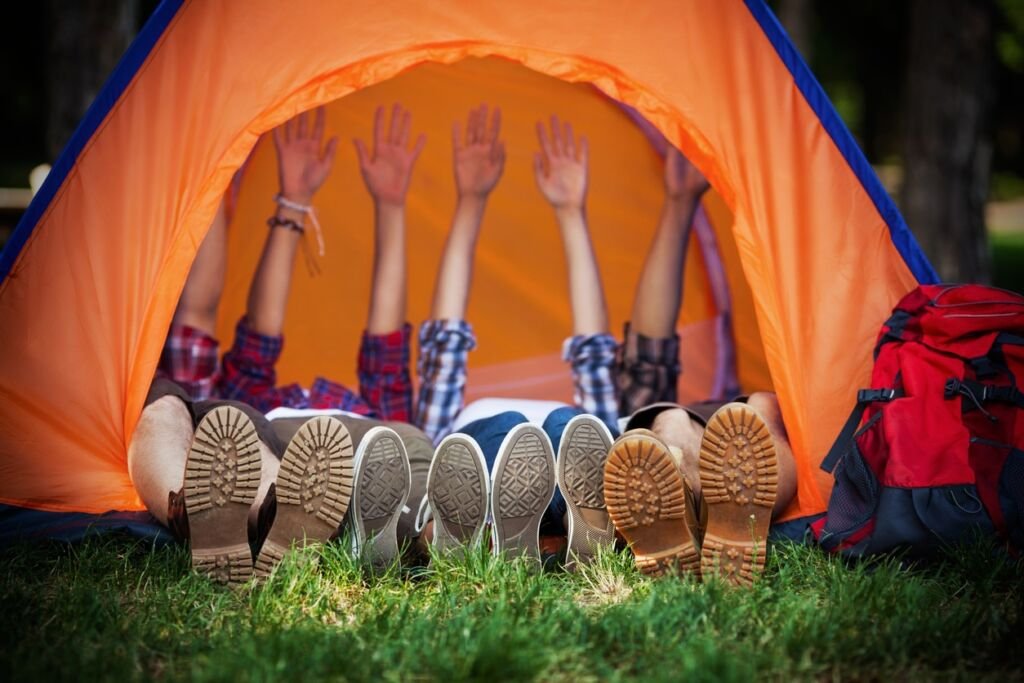
Things To Do When Camping On Angel Island: History, Hiking, Biking, Eating & More!
Though not as popular as Alcatraz Island or Treasure Island, Angel Island has its charms. Besides the camping sites, the island is packed with things to do, most of which can be completed in a day. As we show you below!
Historical Monuments Worth Checking Out
1. US Immigration Station
The US Immigration Station at Angel Island operated from 1910 until 1940 and was built to process immigrants from 80 different countries to the States.
Today, the station is open to visitors for self-guided tours at $5 as well as ranger-led guided tours at a slightly higher cost.
The station had acted as a detention center for immigrants of Asian origin, especially the Chinese, in light of the Chinese Exclusion Act of 1882.
Expressions of distress made by these detainees on the walls of the station can offer perspective into this shrouded part of American history.
2. Fort McDowell
Built in 1899, Fort McDowell was a quarantine station for sick US Army soldiers that were stationed on the island.
Over time, it was converted into a discharge depot for processing overseas assignments for military personnel. The ruins of the fort remain in the East Garrison area.
3. Battery Drew, Battery Wallace, and Battery Ledyard sites
The batteries were set up in 1898 on high points on the southwest side of the island facing the Golden Gate Bridge, what is now the Perimeter Road, as a result of an 1886 report on the defenses on the Pacific Coast harbor.
While the batteries themselves were decommissioned as early as 1909 after starting operations in 1904, the remains of the gun emplacements and weapon storage rooms are still visible on the island.
4. Camp Reynolds
Built in 1863 as a response to the Civil War to house officers and their families, this row of historic buildings is set on the western edge of the island.
The beach along the camp has spectacular views of Tiburon as well as the Golden Gate Bridge.

Biking On Angel Island
If you don’t want to walk on foot for hours at a time, one way to see the knockout views of the island is to ride a bike.
Most ferry companies offer reasonable fares for transporting a bike to and from the island. Unfortunately, bikes are only allowed on the Perimeter Road and the Fire Road Loop though.
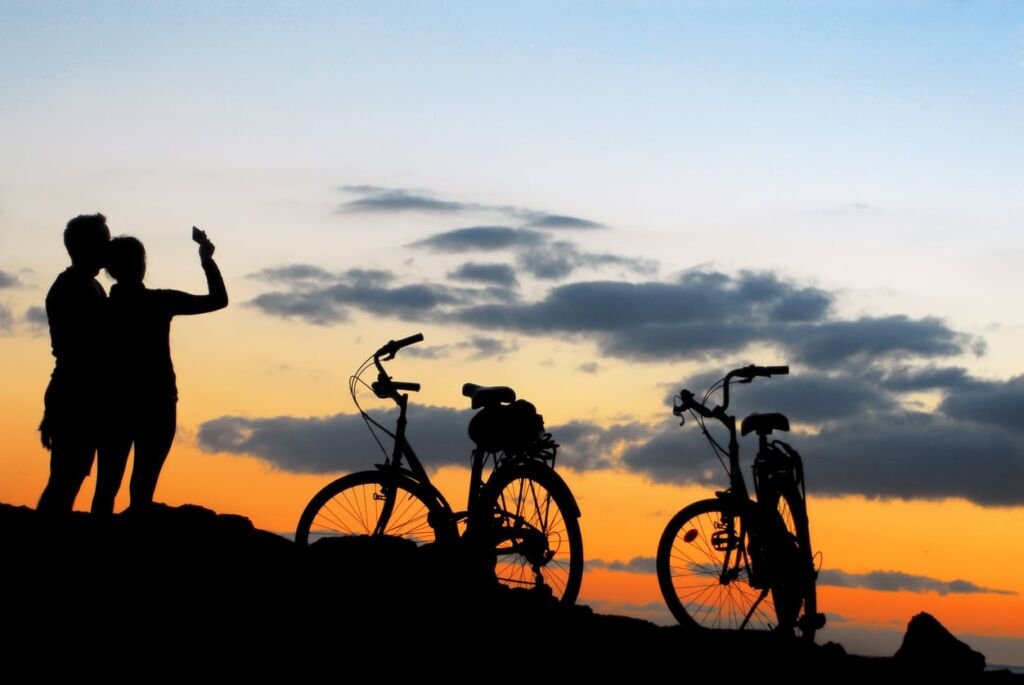
Hiking Trails to Try
The island has around 12 miles of hiking trails with striking views and isolated forests.
The Sunset Trail and the North Ridge Trail, two of the most popular ones, both summit Mount Livermore, the highest point on the island.
The hike varies from four to five miles for each of the trails, both of which take around 2 hours on the climb up and one and half on the climb down. Expect spectacular views.
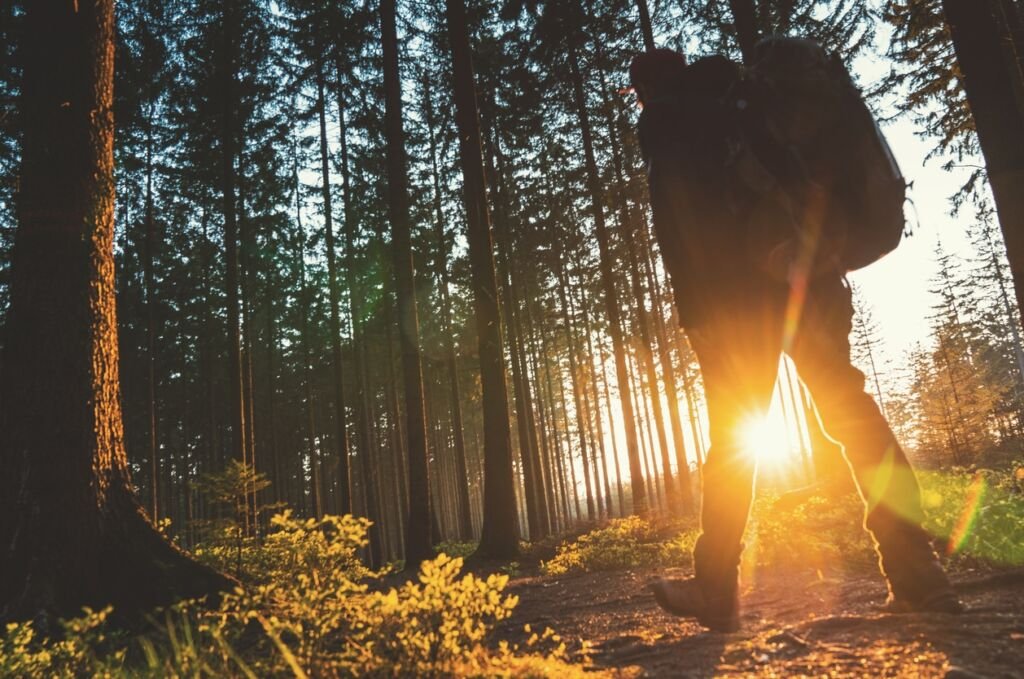
Angel Island Tours
1. Tram Tours
Tram tours are another alternative to walking or biking across the island. Trams leave several times a day from the Angel Island Cafe and tickets are available inside.
The hour-long tour covers Camp Reynolds, the Nike Missile Site, Fort McDowell, and the Immigration Station. The tickets may sell out early, so make sure you buy your tickets as soon as you land on the island.
2. Segway Tour
A tour guide leads you and other visitors on Segways while teaching you a little bit about the history of the island.
The tour travels all 5.5 miles of the Perimeter Road and covers all major sights. You must be 16 years or older to ride a Segway, and the tickets cost $68 each.
You can make a reservation for a Segway tour in advance, but if you haven’t, go to the Angel Island Cafe as soon as you arrive on the island and enquire for any open spots.
Angel Island Eateries
1. Angel Island Cafe and Cantina
The only eatery on the island, this cafe is a mandatory stop for Bay Area residents and visitors alike.
With the outdoor seating offering beautiful views of the Ayala Cove and the Tiburon coastline, there is no better place to relax and unwind after a long hike.
The food is delicious, yet pricey for most visitors. Do remember to try the Point Reyes Salad and the wide selection of California and world wines offered here.

Best Time To Visit Angel Island
Angel Island is at its best from spring through fall when the tours are running and the weather is favorable. These seasons also ensure that you have clear views of the Golden Gate Bridge and the San Francisco skyline.
September and October are two of the best months when it is warm, sunny, and clear across the island. These months are special for their cool afternoons and evening breezes.
Do carry a windbreaker with you though, because the island has a habit of catching its lightly-clothed visitors with the wind!
As a last note, the island can only be accessed through ferries from San Francisco and Tiburon year-round, or Vallejo, Oakland, and Alameda in the summer, so your trip needs to be properly planned


